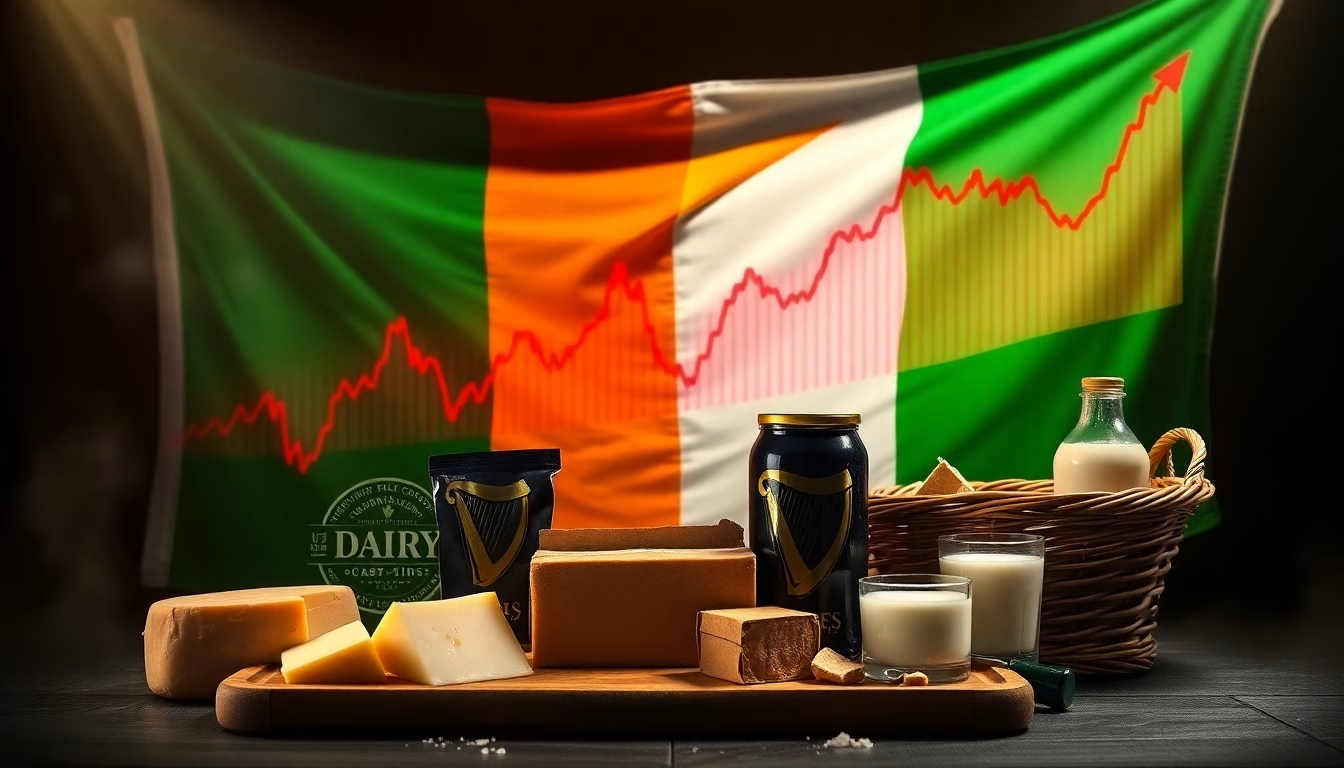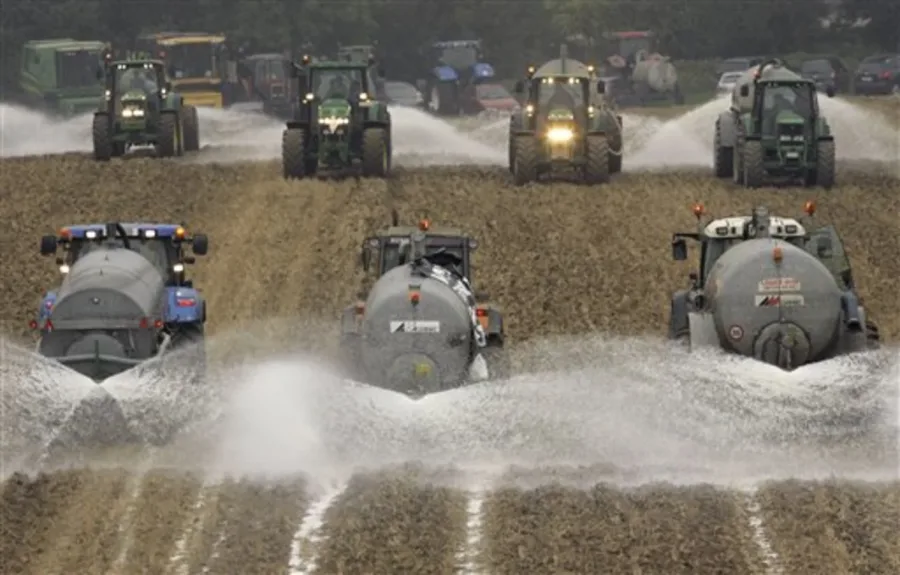Argentina’s dairy industry is staging a cautious comeback amidst economic reforms and climate challenges. As milk production shows signs of recovery, farmers navigate a complex technological innovation landscape, policy shifts, and global market dynamics. What does the future hold for this resilient sector?
Summary:
Argentina’s dairy industry shows signs of recovery, with a December of 4.4% more than in the same last year. This positive change was helped by President Javier Milei’s economic reforms that lowered inflation, provided better access to financing, and removed export duties. Farmers still face climate issues despite these improvements, like the La Niña weather pattern bringing less rain and pests harming corn crops. Currency changes and market access problems remain tough. The future depends on more technology use, eco-friendly farming, discovering drought-resilient crops, and better export markets.
Key Takeaways:
- Argentina’s dairy production increased by 4.4% more than last year, ending an 18-month decline.
- President Javier Milei’s economic reforms stabilize costs, improve financing, and enhance global competitiveness.
- Technological innovations like precision agriculture and robotic milking drive industry efficiency and sustainability.
- Challenges persist, including climate variability, pests, and currency fluctuations impacting production.
- Future growth depends on weather patterns, economic stability, and expansion into new export markets.

Argentina’s dairy sector shows signs of recovery after a tough year, with recent production statistics indicating a 4.4% increase in milk production. However, the industry still faces challenges such as economic reforms, climate variability like La Niña, and uncertainties in market access.
Production Rebound and Global Context
| Country/Region | 2024 Milk Production Change |
|---|---|
| Argentina | +4.4% (Dec 2024 vs Dec 2023) |
| United States | -1.0% |
| European Union | +2.0% |
| New Zealand | Stable |
In November 2024, Argentina’s milk production reached 1.02 billion liters, a 1.5% increase from the same month in 2023. This marks a significant turning point, as it is the industry’s first year in 18 months of growth, signaling a potential recovery after a prolonged decline.
The Observatorio de la Cadena Láctea Argentina (OCLA) projects a 5.72% increase in production for 2025, forecasting 11.190 billion liters annually based on recent trends. This growth contrasts with other major dairy producers:
- The U.S. saw a 1.0% drop in milk production in 2024 compared to the previous year.
- The European Union experienced a 2.0% rise
- New Zealand’s production remained relatively stable
Economic Reforms and Their Impact
| Reform | Impact on the Dairy Industry |
|---|---|
| Inflation Reduction | More stable operating costs |
| Improved Financing Access | Increased investment in operations |
| Removal of Price Controls | Market-driven pricing for dairy products |
| Abolition of Export Duties | Enhanced global competitiveness |
President Javier Milei’s economic reforms have significantly improved the sector’s recent performance by enhancing stability and competitiveness. Key changes include:
- Reducing inflation: This has led to more stable operating costs for dairy farmers
- Improving access to financing: Allowing farmers to invest in their operations
- Removing domestic price controls: Enabling market-driven pricing for dairy products
- Abolishing export duties: Making Argentine dairy more competitive globally
While these reforms aim to enhance the industry’s long-term competitiveness, their full impact is yet to be fully realized, leading to concerns about short-term disruptions as the market adjusts to the new policies. Some economists worry about potential short-term disruptions as the market adjusts to these new policies.
“This projection aims to provide an outlook for 2025 based on currently available data, yet the high volatility and uncertainty that characterize the beginning of this year could lead to significant deviations from these forecasts.” – Observatorio de la Cadena Láctea Argentina (OCLA)
Technological Advancements
New technologies are being adopted in the Argentine dairy industry to enhance efficiency and productivity, including:
- Precision agriculture involves using data to improve how farmers manage to feed and herds efficiently.
- Robotic milking systems automate the process to make it more efficient and enhance cows’ comfort during milking.
Sustainable farming practices involve using technologies to save water and adopting renewable energy sources to promote environmental sustainability.
These innovations, such as precision agriculture and robotic milking systems, assist farmers in managing feed efficiently, automating the milking process, and ultimately enhancing their competitiveness in the global market.
Specific Challenges for Dairy Farmers
Dairy farmers in Argentina encounter several specific challenges, including:
- Climate variability: The La Niña weather pattern is expected to bring below-normal rainfall to key dairy regions, potentially affecting feed production and water availability.
- Pest threats: The “chicharrita” pest has damaged corn crops used for silage, impacting feed quality and availability.
- Currency fluctuations: Rapid changes in the value of the Argentine peso can affect the cost of imported inputs and export competitiveness.
- Market access: While export duties have been removed, farmers still face challenges accessing new international markets.
“No hay plata” (“There is no money”) – President Javier Milei
Future Scenarios and Outlook
Beyond 2025, the Argentine dairy industry may encounter various scenarios, including:
- Optimistic scenario: Continued economic stability, favorable weather conditions, and successful market expansion could lead to sustained growth and increased global market share.
- Moderate scenario: Gradual recovery with occasional setbacks due to climate or economic factors, maintaining current market position.
- Challenging scenario: Persistent climate issues, global economic downturns, or policy reversals could hinder growth and reduce competitiveness.
Adapting to these potential outcomes will be crucial for the industry’s long-term success. Key factors shaping the future include:
- Continued investment in technology and sustainable practices
- Success in developing drought-resistant feed crops
- Ability to diversify export markets beyond traditional partners like Brazil
- Ongoing government support for the sector through favorable policies
During Argentina’s dairy industry’s gradual recovery, stakeholders must stay vigilant and adaptable to secure long-term growth and competitiveness in the global market.
Learn more:
- Global Dairy Market Trends July 2024: Australia’s Rise as Argentina and New Zealand Face Challenges
- Global Dairy Trade: Key Insights Every Dairy Farmer Should Know
- Global Milk Supplies Expect to be Stable for the Remainder of 2024
 Join the Revolution!
Join the Revolution!
Bullvine Daily is your essential e-zine for staying ahead in the dairy industry. With over 30,000 subscribers, we bring you the week’s top news, helping you manage tasks efficiently. Stay informed about milk production, tech adoption, and more, so you can concentrate on your dairy operations.



















